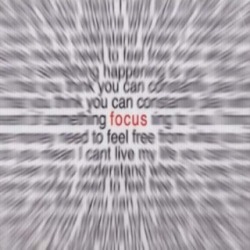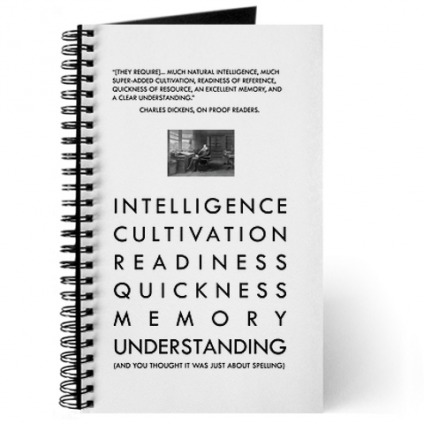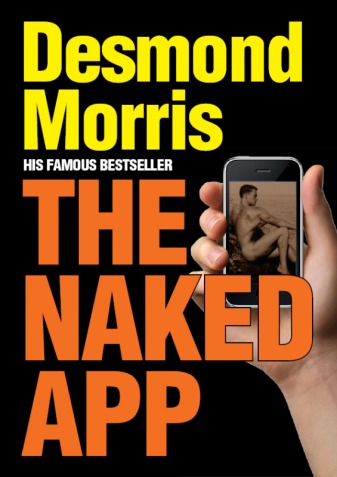|
To provide our customers (and, hopefully, that includes you) with an even more comprehensive experience, we’ve just opened an Amazon store designed to cater for all your proofreading needs. We’ve got everything from fine-line red pens and magnifying glasses to electronic dictionaries and weighty tomes tackling the spiky subject of English usage. Click here to explore. If there’s something you’re looking for and we don’t appear to have catered for you, please let us know by clicking here and we’ll do our very best to rectify matters.
Happy shopping! Further to yesterday’s post about proof readers and their pens, The Pen Addict has kindly made a couple of recommendations.
“I have had one or two proof readers mention to me that the Pentel Slicci 0.25mm red gel ink pen is one of their favourites. The line is sharp, consistent, and skip free, and the red ink is bright. This pen has no problems stopping and starting. The only issue some have with this pen is that the barrel diameter is too narrow for their tastes. Another option would be the Uni-Ball Signo DX in 0.38mm or 0.5mm line widths. It comes in a 0.28mm, but it is much more scratchy than the Slicci.” Our thanks to The Pen Addict for his expert advice. I’ve just added two more proofreading exercise here. If you take a look at them, you’ll find they differ from practically every other proofreading exercise you’ve encountered in one significant aspect.
Each proofreading exercise contains only a handful of errors. Most proofreading exercises are crammed with spelling mistakes and grammatical slip-ups. Every other line features a glaring faux pas of one sort or another. In the real world, you’ll be proofreading copy that is likely to have been produced by professionals, by people who take the quality of their output very seriously. They actually don’t want to have their inadequacies pointed out to them, so they’ll be doing their level best to create error-free documents. The proofreading exercises on this website, like The No-Nonsense Proofreading Course itself, will prepare you to actively pursue and carry out genuine proofreading assignments. In the real world. Not in some bizarre parallel universe where documents are created by bumbling individuals incapable of stringing a sentence together. Good luck with the exercises! After you’ve been proofreading for a while, you’ll start to get a little bit picky about pens. You’ll find some pens are too splodgy and some pens deliver precisely the right amount of ink onto the page. You’ll find some pens are too scratchy and some pens seem almost to caress the paper. You’ll find some pens are easy to grip and some pens are like eels with a nib. You’ll find some pens endure and some pens dry out if you leave the lid off for more than a nanosecond. You’ll find some pens are tough as Tonka toys and some pens are delicate and doomed. And, eventually, you’ll find a pen that, like Baby Bear’s porridge, is just right.
It can take a while. Thankfully, there’s already somebody out there who’s as obsessive about pens as you are destined to be. You’ll find him here. Not only does this guy product-test and review a plethora of pens, he also provides you with a large image of a writing sample (like the one above) for each pen so you can judge for yourself. You may find this pen-obsessive individual a little disturbing at first. Try not to be too judgemental, you’re looking at a snapshot of your future self. There are quite a few advertisements for The No-Nonsense Proofreading Course floating around the web now, and they all lead off with pretty much the same message: “If you can spell, have a reasonable grasp of grammar and can concentrate for prolonged periods, you may have what it takes to be a proof reader.”
Now, The No-Nonsense Proofreading Course is true to its title: no nonsense. It tells you everything you need to know to become an effective proof reader and how to go about setting up your proofreading business. It doesn’t go off on any tangents. So, it doesn’t cover the third component covered in our various advertisements: concentration. Luckily we have this website and, more particularly, this regularly-updated blog. Here we can go off on any tangent we please without adversely affecting the no-nonsense philosophy of the course itself. Which is a slightly tortuous way of telling you that today’s blog post is all about concentration. Here are five tips to help you stay on the ball. 1. Stay hydrated. It is a fact that dehydration reduces our ability to concentrate. Keep a bottle of water on hand, drinking from it little and often. 2. Reduce the amount of sugar in your diet. Although the links between sugar and conditions such as Attention Deficit Hyperactivity Disorder are tenuous, it is a fact that refined sugar products produce a rapid and heightened energy boost. You simply don’t require that kind of fidget-inducing fuel when you’re chained to a desk for a couple of hours trying to stay focused. Energy you need, yes, but something that creates more of ‘steady as she goes’ effect. Think raisins, an apple or fruit juice (hydration and energy). 3. Get plenty of sleep. Studies show that lack of sleep dramatically reduces our ability to concentrate, so try to get at least six hours, but preferably seven or eight. 4. Stretch your legs. Exercise clears the mind and shakes off the sluggishness that can creep into your muscles (not to mention your very soul) when you spend long periods of time at a desk. Make sure you take at least half an hour of exercise each day, preferably somewhere around the midpoint of your working day. A brisk walk ought to do it. 5. Stimulate your brain. Your mind is like a muscle and lack of use can cause it to atrophy. As a full-time proof reader, your mind is going to receive regular and vigorous workouts. Unfortunately, those workouts are all going to be similar and somewhat repetitive, and the mind, like any muscle, needs a variety of workouts if it is going to stay in peak condition. Crosswords, lateral thinking puzzles and even maths-orientated problems will help your brain ‘go for the burn’. You’ll find a regularly updated crossword on our Fun page. Now, I think I need to stretch my legs... I came across this interesting quote from Charles Dickens, yesterday. Dickens is extolling the virtues of... well, see if you can guess the profession under discussion.
“[They require]... much natural intelligence, much superadded cultivation, readiness of reference, quickness of resource, an excellent memory, and a clear understanding.” That’s right; he was talking about proof readers. Well, ‘correctors of the press’ as they were known in 1867 when Dickens was addressing the Association of Correctors of the Press, a sort of proof readers’ union. I liked this quote so much that I’ve created a journal and added to our store. So, as well as being useful for keeping those all-important proof reading notes, you can flip to the front cover whenever you’re feeling a little underappreciated and bask in the glowing praise of one of literature’s greatest and most-enduring talents. The No-Nonsense Proofreading Course has been available for about three weeks now and sales are going strong. Plus, we haven’t had a single dissatisfied customer. We must have done something right!
One interesting piece of data yielded up by our first sales report relates to gender. So far, 80% of those who have invested in The No-Nonsense Proofreading Course are women. In the 20 years I’ve been proofreading and working with proof readers, it has been a largely male-dominated field. Why? I’m not quite sure, but it probably has something to do with the fact that proofreading, up until about ten years ago, was part and parcel of the print industry, and the print industry – with its typesetters, compositors and plate-makers – was something of a working man’s arena. Old habits die hard and like tends to beget like, so the proofreading ‘sub-industry’ continued to recreate itself very much in its own image. As a rule, the gender that dominates a particular profession will dig its heels in against the threat of change from its opposite number. Just ask my dad: a nurse in the NHS throughout the seventies and eighties. So, why the gender shift in proofreading? Well, it goes without saying that there is no reason why women shouldn’t make highly-effective proof readers (and, in my experience, they frequently do). In fact, statistics suggest much greater levels of literacy amongst girls in both primary and secondary schools than boys. We must deduce, then, that it’s a matter of opportunity. Up until recently, that opportunity knocked but rarely. And, then, along came the internet. The ability to work from home and make money online is something that women have grasped with both hands, far more effectively than their male counterparts. You only have to look at the support structures women have created online (the working mum’s forums, for example) to see just how successfully they’ve staked their claim on the work-from-home phenomenon. Men are lagging behind in this virtual world, perhaps because we lack the natural urge to cooperate; perhaps because we still persist in our view of the internet as an online marketplace, whereas women tend to see it for what it really is: a vast conversation, with commercial opportunities available to those who are able to participate in said conversation in the most energetic and vivacious fashion. I mean, where are the work-from-home dad’s forums? Enough said. The internet really has changed things for the better, at least in terms of providing equal access when it comes to work-from-home opportunities. Still, it’s early days yet. I’ll keep you posted on this interesting trend when we produce our next sales report in about four weeks’ time. To all of you who bought the book: thank you! |
Details
Testimonials
“I am one of those many fools who paid a huge amount of money for a useless course. This book... has opened so many doors for me. I now look on Mike as my mentor as I embark on a career. Thank you Mike.” Emma Steel, Proofreader and International Structural Editor. “ I thoroughly enjoyed the course and am so glad that I decided to take it... the whole experience was invaluable. My proofreading service is now well established and your course played no small part in getting it off the ground.” Hache L. Jones, Proofreader. “I'd just like to thank you first of all for writing such a great, straight forward eBook, and then going above and beyond what I would even expect as a customer by providing us, completely free of charge, updated versions months later!” Rachel Gee, Trainee Proofreader. “What can I say? Worth every penny and then some! God Bless! This a fabulous course.” Teresa Richardson, Proofreader. “As someone who has effectively been proofreading for thirty years, I found Mike’s No-Nonsense Proofreading Course an invaluable introduction and a very useful practical guide to many aspects of this discipline. I can wholeheartedly recommend it as the ideal starting point, and much more besides.” Jeremy Meehan, Proofreader. Blog AuthorMy name's Mike Sellars and I'm an experienced proofreader and the author of The No-Nonsense Proofreading Course. Click here to find out more about me. The No-Nonsense Proofreading CourseA Fraction of the Cost of Other Proofreading Courses NOTE: Stock is currently limited to 10 per day, so we can continue to deliver exceptional after-sales service, answer queries and provide open-door support. Credit card and PayPal payments accepted. “As someone who has been proofreading for 30 years, I found Mike’s course an invaluable introduction and a very useful practical guide to many aspects of the discipline. I can wholeheartedly recommend it.” Jeremy Meehan, Proofreader. Still want to find out more? Click here. Proofreading Categories
All
Proofreading Archives
July 2024
|











 RSS Feed
RSS Feed
